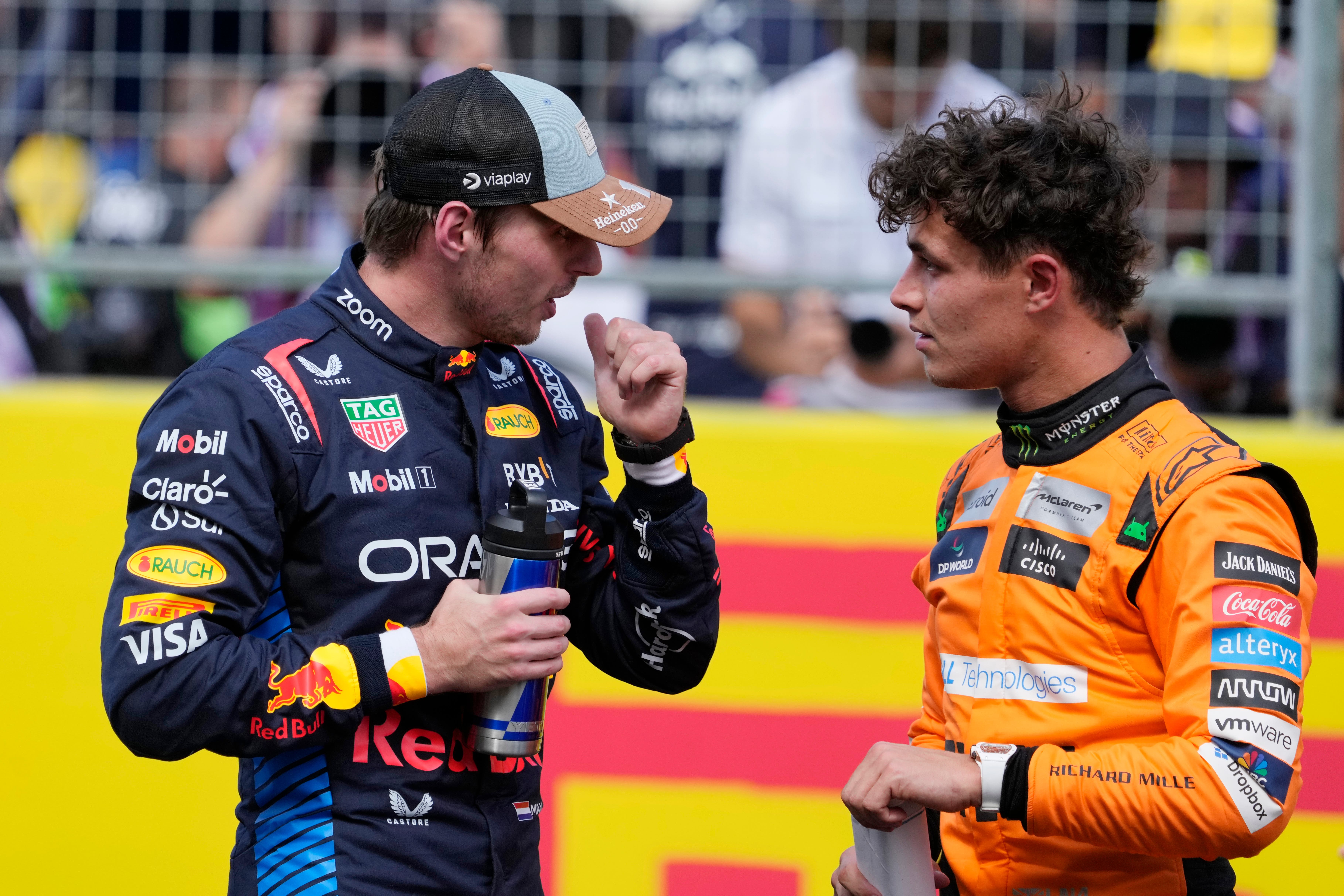What was supposed to be a seamless continuation of Red Bull’s dominance in Formula 1 has rapidly turned into a strategic nightmare. Max Verstappen, the indomitable force of the hybrid era, now finds himself battling shadows—not the faint competition of years past, but the scorching pace of McLaren’s MCL39. As Red Bull scrambles to understand their car’s unpredictability and reacts to the fierce challenge posed by McLaren, the 2025 season could become a pivotal moment for both the team and the sport.

The Miami Grand Prix served as a perfect microcosm of Red Bull’s unraveling season. Verstappen claimed a brilliant pole position, but on race day, he found himself helpless. McLaren’s drivers, Lando Norris and Oscar Piastri, surged past him with ease, as did George Russell in a Mercedes that had yet to find its perfect balance. Verstappen finished the race in an unexpected fourth place, his performance more a reflection of the car’s failure than his own driving ability.
The culprit? Red Bull’s ambitious new floor upgrade to the RB21. Introduced in the hope of closing the performance gap to McLaren, the modification was expected to boost the car’s aerodynamics and stability. Instead, it has thrown the team into disarray. Verstappen, known for his precise feedback and technical acumen, admitted to being “confused” by the car’s behavior. He couldn’t discern if the upgrade had worked at all, signaling a significant disconnect between the driver’s input and the team’s data.
The Miami circuit, with its low grip, unpredictable surface, and complex layout, exacerbated the issues. Red Bull, facing such a challenging environment, could not draw clear conclusions from the race. However, their problems go beyond just one event. A quick look at the season’s earlier races reveals a troubling trend. Verstappen’s long-run pace, once a hallmark of Red Bull’s strength, has been deteriorating faster than expected. Tire overheating, a problem that has plagued competitors like Ferrari in the past, is now a significant concern for the RB21. Even in Suzuka, where Verstappen took victory, McLaren was always within striking distance, signaling that the fight for supremacy is no longer a one-horse race.

The real game-changer has been McLaren’s ability to manage tire wear. The MCL39, designed with a sharp focus on aerodynamic balance and thermal control, has proven to be the gold standard in tire longevity. Where Red Bull once held an edge in extracting speed while conserving tire life, McLaren has flipped the script. The MCL39 consistently delivers both blistering qualifying pace and exceptional race performance, making it the most formidable challenger on the grid.
This was evident in Miami, where Verstappen’s stunning pole position seemed to promise victory, only for the race to take a tragic turn. Piastri and Norris didn’t just pass Verstappen—they dominated him. The gap between Red Bull and McLaren now seems more than a mere tactical difference; it’s structural. Even George Russell, driving a Mercedes that has yet to find its rhythm in 2025, managed to overtake Verstappen during the race.
Red Bull’s response to this challenge has been telling. Helmut Marko, a key figure in the team’s leadership, expressed his dissatisfaction with the team’s performance in no uncertain terms, calling their race pace “depressing.” For a man known for his stoic assessments, such a candid admission was a major red flag. Marko revealed that Verstappen’s pole position was only achieved because both McLaren drivers, as well as Mercedes’ Andrea Kim Antonelli, made errors in their final qualifying runs. The honesty in Marko’s words underscores the gravity of the situation: Red Bull is no longer ahead; they are chasing.

The Imola Grand Prix now looms large. Red Bull is set to introduce further upgrades, not just to the floor but potentially to the diffuser, rear suspension geometry, and cooling solutions. The stakes could not be higher—if these upgrades fail to deliver, the season may already be slipping out of their grasp. However, McLaren isn’t standing still, and Ferrari and Mercedes are preparing their own updates, meaning Red Bull is now playing catch-up.
Imola presents some hope. The smoother surface and more traditional cornering forces of the track could play to Red Bull’s strengths, particularly in braking stability and tire management. However, with tire degradation continuing to plague the RB21, the question remains: How much can Red Bull really achieve from floor upgrades alone? If the RB21’s fundamental design cannot match the MCL39’s superior tire management, no mid-season changes will be enough to fix the problem.
In addition, looming changes to flexible wing regulations may further hamper Red Bull’s downforce, cutting into their performance advantage. While Christian Horner, Red Bull’s team principal, has downplayed these concerns, insiders suggest the team is already preparing contingency plans.
On a personal level, Verstappen remains composed, but the frustration is palpable. He’s in the prime of his career, but the car he’s driving is becoming increasingly difficult to trust. This is dangerous for Red Bull—not because of their rivals, but because a frustrated Verstappen could become a restless Verstappen. Whispers of potential contract exit clauses and dissatisfaction beyond the 2025 season only add to the team’s mounting concerns.
As the season progresses, the burning question is: Will Red Bull’s upgrades at Imola be enough to turn the tide, or has McLaren already built an uncatchable beast? With the momentum shifting away from the reigning champions, the war for the 2025 title is far from over—but it’s clear that Red Bull is no longer leading the pack.